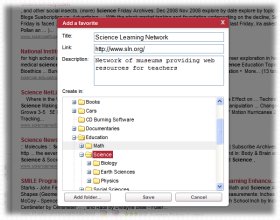|
Education
Web
Viewing 1-3 of 3 total results
NCSALL Reports #19 August 2001 Even Start Site 235 It explores how the context of the Even Start family literacy program, for the majority of the students, provided a community of confirmation and recognition supporting these students’ efforts of self- defin...
1
0
NCSALL Reports #19 August 2001 Even Start Site 235 It explores how the context of the Even Start family literacy program, for the majority of the students, provided a community of confirmation and recognition supporting these students’ efforts of self- definition and movement toward their goals for themselves and their children. But this chapter is also the story about the challenges these students face, both within the
7
0
http://www.ncsall.net/fileadmin/resources/research/19_c5.pdf#page=7
www.ncsall.net/fileadmin/resources/research/19_c5.pdf#page=7
NCSALL Reports #19 August 2001 Even Start Site 235 It explores how the context <span class="highlight">of</span> the Even Start family literacy program, for the majority <span class="highlight">of</span> the students, provided a community <span class="highlight">of</span> confirmation and <span class="highlight">recognition</span> supporting these students’ efforts <span class="highlight">of</span> self- definition and movement toward their goals for themselves and their children. But this chapter is also the story about the challenges these students <span class="highlight">face</span>, both within the
themselves. Overall, most educators highlighted the positive effects of using health as a topic of discussion and activity. Teachers were also asked to compare health as a subject to other common topic areas, such as literature or history, and rate the extent to which the...
1
0
themselves. Overall, most educators highlighted the positive effects of using health as a topic of discussion and activity. Teachers were also asked to compare health as a subject to other common topic areas, such as literature or history, and rate the extent to which the health project contributed to various areas or skills. As Table 3 illustrates, all of the mean scores were above the mid- point. These data indicate that when compared to other topics, health projects were perceived as offering added value for the
9
0
http://www.ncsall.net/fileadmin/resources/research/rep5.pdf#page=9
www.ncsall.net/fileadmin/resources/research/rep5.pdf#page=9
themselves. Overall, most educators highlighted the positive effects <span class="highlight">of</span> <span class="highlight">using</span> health as a topic <span class="highlight">of</span> discussion and activity. Teachers were also asked to compare health as a subject to other common topic <span class="highlight">areas</span>, such as literature or history, and rate the extent to which the health project contributed to various <span class="highlight">areas</span> or skills. As Table 3 illustrates, all <span class="highlight">of</span> the mean scores were above the mid- point. These data indicate that when compared to other topics, health projects were perceived as offering added value for the
was developed. Next, classroom-level models of the respondent-level regression slopes were investigated. Using the estimated classroom variation in intercepts as a comparison, the base model was developed. The classroom-level predictors were entered into the classroom-level ...
1
0
was developed. Next, classroom-level models of the respondent-level regression slopes were investigated. Using the estimated classroom variation in intercepts as a comparison, the base model was developed. The classroom-level predictors were entered into the classroom-level model one at a time and then together. To determine whether these predictors should remain in the model, four criteria were considered:
57
0
http://www.ncsall.net/fileadmin/resources/research/report17.pdf#page=57
www.ncsall.net/fileadmin/resources/research/report17.pdf#page=57
was developed. Next, classroom-level models <span class="highlight">of</span> the respondent-level regression slopes were investigated. <span class="highlight">Using</span> the estimated classroom variation in intercepts as a comparison, the base <span class="highlight">model</span> was developed. The classroom-level predictors were entered into the classroom-level <span class="highlight">model</span> <span class="highlight">one</span> at a time and then together. To determine whether these predictors should remain in the <span class="highlight">model</span>, four criteria were considered:
|
